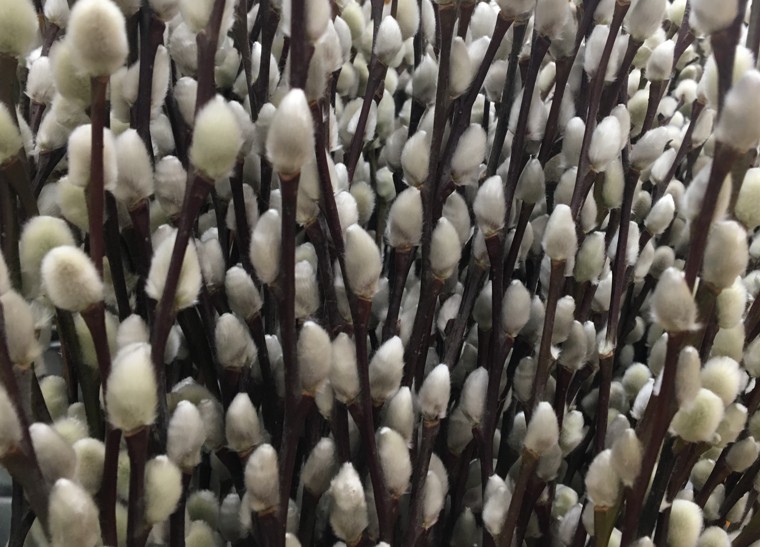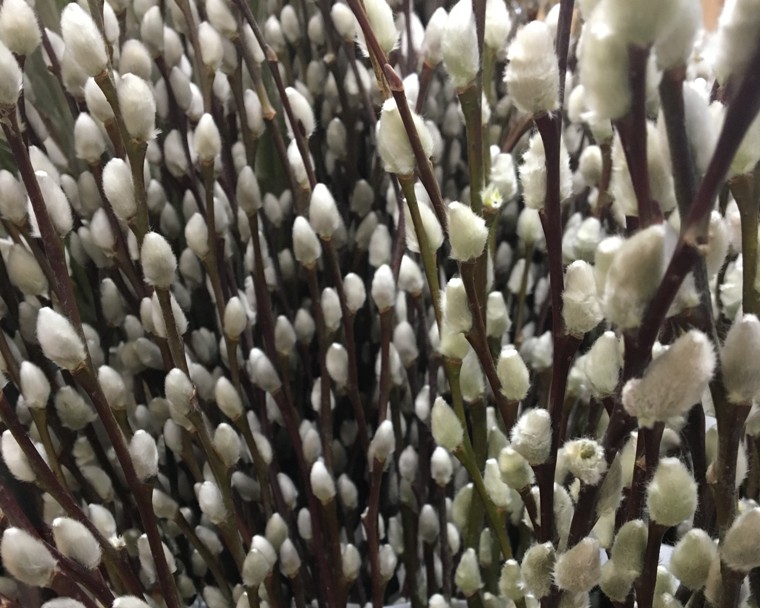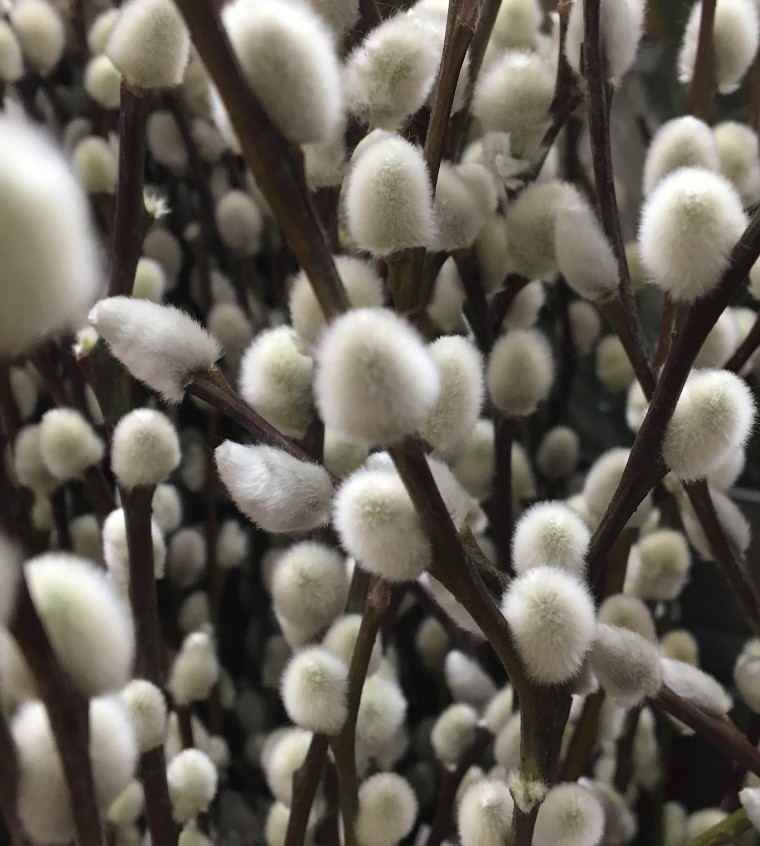I was very young when I first felt one with my fingers.
I’d stepped into the open crotch and raised myself up into arms that reached skyward.
It must have been a warm spring day because my memory tells me it was summer when it happened but the bloom calendar has this in dispute. Pussy willows bloom in early spring, so when I climbed into a large specimen as a child it was probably only April. Near the bottom of a slight slope in our neighbor’s yard, a magnificent pussy willow shrub had grown into a substantial tree, making use of the water that would occasionally dampen that section of yard.
Like forsythia and witch hazel, pussy willows marked the early spring blooms that signaled the happy demise of another winter. I bent a few twigs, breaking them off, and quickly climbed down, the little fuzzy prize procured. I don’t know why I would have been so high in a tree so early in the season, but kids are weird that way. Whenever the fruit trees bloomed I seemed to find myself up in their boughs, gleefully avoiding the buzzing bees making their pollinating rounds.

There is no more narrative on that pussy-grabbing day – I only remember being in the pussy willow and taking a few small stems with me. I think it remains in my memory bank because I have always thrilled at famous flowers or fruits being found in their native habitat, growing happily outside. Having seen the pussy willow in bouquets on various teachers’ desks, and learning about them in class, I was enrapt by their existence outside in a neighbor’s yard. It’s the same spell that was cast as I passed a tree fern and a stand of blooming agapanthus just casually thriving in a San Francisco courtyard. I was an adult then, but I remember it distinctly because we don’t see such things in the wilderness of upstate New York.
The renowned furry buds of the pussy willow are actually the catkins of the male flower. That’s right – the trademark kitten-like blooms that give the pussy willow its name are guys. The actual flowers that later appear are like tiny little clouds that dance about the fuzzy catkins. It’s all rather charming and mysterious, not unlike the shift from winter to spring, where things seem to happen in the mystical night, and life begins again as ice melts into water and the sounds of peepers fill the darkness.


